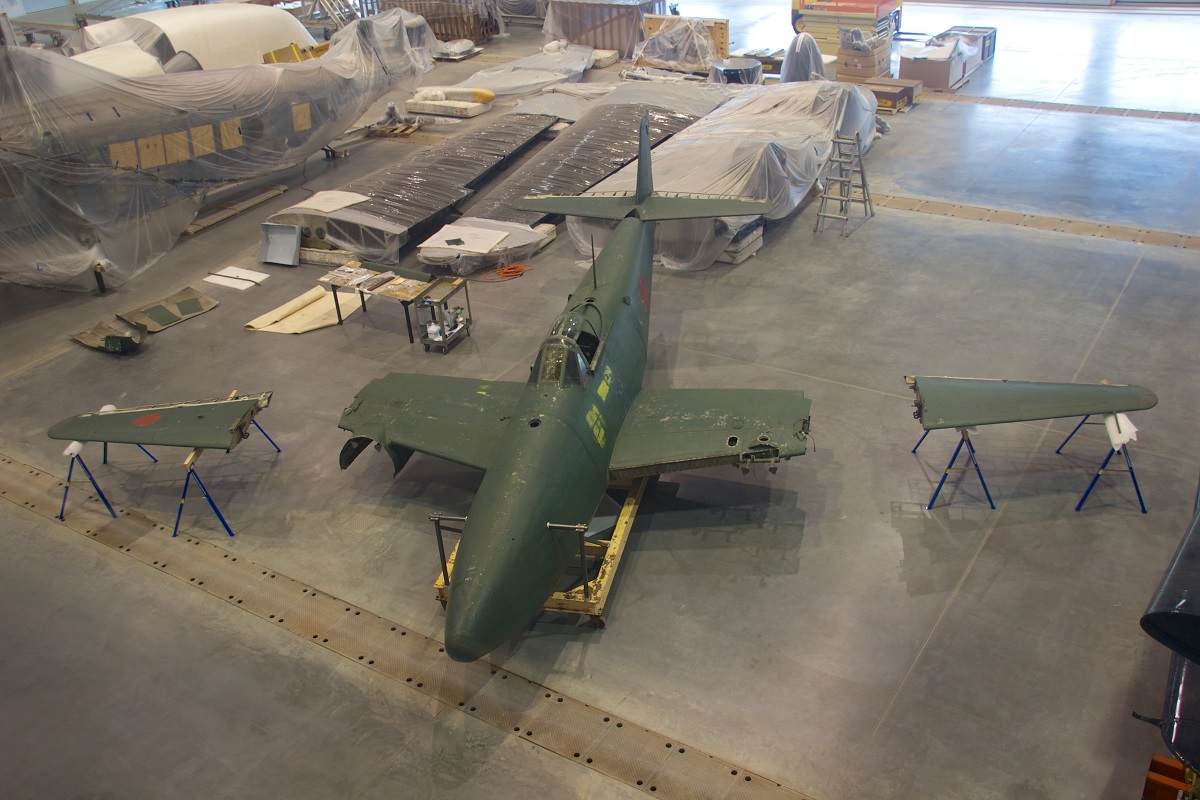On August 7, 1945, the Kikka successfully completed its one and only test flight, which lasted just 20 minutes, and took off from Kisarazu Naval Air Base. To help it take off, the aircraft used rocket-assisted takeoff gear
After the Japanese military saw a demonstration of the Messerschmitt Me 262 Schwalbe (“Swallow”) in 1944, the Imperial Japanese Navy Air Force (IJNAF) asked Nakajima to construct a similar turbojet-powered model to be used as a high-speed attack fighter. The IJNAF required the new machine to be simple to produce and have foldable wings so that aircraft could be hidden from Allied aerial raids in caverns and tunnels, as related by Mark Chambers in his book Wings of the Rising Sun. Kazuo Ohno and Kenichi Matsumura, two prominent Nakajima aircraft designers, accordingly came up with the idea for a fighter that closely resembled a scaled-down Me 262, but had straight wings as opposed to wings with a considerable amount of sweep.
Two 441lb thrust Tsu-11 Campini-type engines were originally intended to power the aircraft, but they were swiftly swapped out for more powerful 750lb thrust Ishikawajima Ne-12s. Since these engines similarly failed to provide enough thrust, Ishikawajima began to construct replicas of the BMW 003 installed to the Me 262 using in-depth pictures that IJNAF engineer Cdr Eichi Iwaya had taken. The axial flow turbojet, known as the Ne-20, had a 1,047lb thrust rating. The fighter, by this time known as Kikka (“Orange Blossom”), had a top speed of 432 mph at a height of 32,800 ft. It was equipped with two 30mm Type 5 cannons and had a 1,102Ib or 1,764lb bomb capacity.
On August 7, 1945, the Kikka successfully completed its one and only test flight, which lasted just 20 minutes, and took off from Kisarazu Naval Air Base. To help it, the aircraft used rocket-assisted takeoff gear. Japan surrendered shortly after, ending the opportunity for further flying tests. At the end of the war, a second prototype was almost finished, and American forces discovered roughly 23 Kikkas being built at Nakajima’s main facility in Koizumi, Gunma Prefecture, and at a location on Kyushu Island.
The Kikka airframes 3, 4, and 5 were sent to America in late 1945, together with a number of Ne-20 engines, where they underwent technical analysis. The second Kikka prototype was also brought to the US and only underwent brief ground testing at “Pax River” in 1946, and it was equipped with two Ne-20 turbojet engines. The Chrysler Company received a second set of Ne-20s in the same year, and by merging components from both turbojets, they were able to put together a single functional powerplant. The official Chrysler Ne-20 Turbojet Report, titled “Japanese NE-20 turbojet engine,” was ran for 11 hours and 46 minutes. The Tokyo National Science Museum now has a display called “Construction and performance.”
Two of the four Kikkas that were shipped to America were demolished, while the other two were kept in long-term storage at NAS Norfolk from the late 1940s. In March 2016, the fuselage and center wing portion of one of the airplanes were placed on static display in the Steven F. Udvar-Hazy Center without its engines. Both aircraft were relocated to “Silver Hill” in September 1960. Another Kikka is still in storage. The National Naval Aviation Museum in Pensacola and the Tokyo Science Museum both have Ne-20 turbojet engines on exhibit right now.
Wings of the Rising Sun is published by Osprey Publishing and is available to order here.

Photo by unknown

